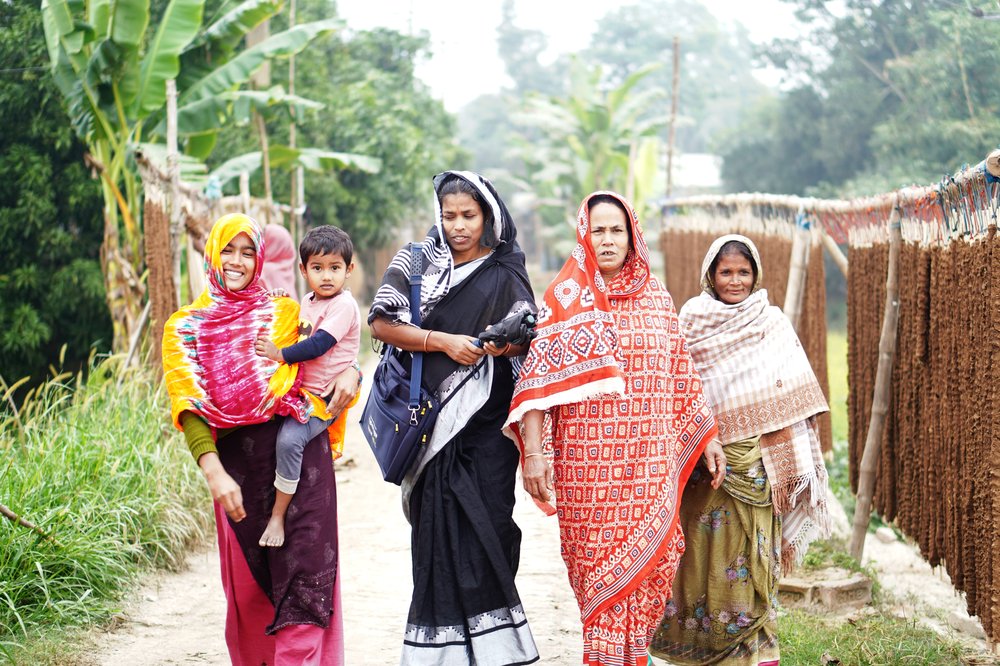
By Xiaobei Wang, China Gender Specialist, and Elisa Scalise, Director of the Landesa Center for Women’s Land Rights.
Thirty years ago, in an effort to reduce poverty and improve the lives of farmers, China began a series of reforms that have transferred control over thousands of acres of forests from collectives to households.
Certificates, which give families use rights to a particular patch of forest, were issued to approximately 84 million households by the end of 2011—allowing individual families, for the first time, to control and benefit from China’s significant forest reserves.
At first glance, that is a huge success from a poverty alleviation perspective.
However, uneven implementation of the law has meant that many women who should have benefited from these decades of significant reforms, haven’t, a new study by Landesa and the Rights and Resources Initiative has found.
Recent research on women’s forestland rights in China, conducted from July to September 2011 in three of the most forested provinces in China—Hunan, Fujian, and Yunnan— identified several key challenges faced by women.
Women account for more than 60% of the rural labor force in China. And, as more and more men are migrating to urban areas in search of lucrative economic opportunities, women have become the main forestland users.
Essentially, while the men are gone, the women are working on the forestland, cutting down timber to be sold and scouring the forest for medicinal herbs and edible plants, which are also used as valuable sources of income.
And at the same time, many of these women have a marginal voice in village-level decision-making, many of their names are not documented on forestland rights certificates, and many cannot benefit from the economic opportunities generated from the forestland.
This represents a paradox, considering that the Chinese Constitution grants broad equal rights to women and that specific laws provide protections for women’s land rights.
Our research has found that several prevalent factors play a role in restricting women’s forestland rights:
- Gendered social norms and practices that influence forestland rights allocation and women’s involvement in forestland decision-making. These social norms and practices also influence women’s ability to participate in a variety of activities that could improve their forestland tenure.
- Women’s property rights are dependent on their relationship with the males in the family. Marital status and place of birth influence whether a woman will be granted forestland rights.
Our research also illuminated several key findings:
A significant number of women are not allocated forestland and do not benefit from the forestland: Women are often excluded from eligibility criteria in forestland rights allocation, and these criteria vary from village to village. Particularly affected are those who marry outside their village or are divorced. Those who marry into their husbands’ villages must prove their residency with documents that for some women are extremely difficult to obtain.
Even if a household is allocated forestland rights, many women cannot use the forestland: Normally, daughters who marry outside their village are no longer considered part of their parents’ households, and they then must forfeit their forestland rights and the benefits allocated to those households. Likewise, divorced women must relinquish their share to their former husbands. In addition, forestland rights are primarily inherited by sons, even though Chinese law calls for equal inheritance rights for men and women.
Women’s names are generally not included on the forestland rights certificates: While forestland rights certificates seek to strengthen forestland rights for the household, they may actually weaken the rights of women. For example:
- The head of the household, usually a man, can transfer the forestland of the household without his spouse’s consent.
- Without a certificate, women are not allowed to apply for the right to harvest trees from state forests—a resource made available to villagers on a limited quota system—for the market.
There is low participation of women in the decision-making process at the village level: Women interviewed do not realize the importance of their participation in the decision-making process. Nearly 95% of the women interviewed never attended any village meeting, and because of this, their interests are less likely to be considered and their rights more likely to be infringed upon.
Women have insufficient access to information on forestland reform: Most women interviewed were ignorant of the relevant laws and policies, upcoming plans for forestland tenure reform implementation in their villages, and the extent of forestland rights. Most of the women interviewees stated they needed to ask their husbands or nearby male villagers for information.
China is way ahead of many countries in creating a gender sensitive legal framework for land rights. However, these findings strongly indicate that while women are the main users of forestland in China, they are without secure rights, making it more difficult for them to fully benefit from forestland tenure reforms. Traditional gender practices, norms, and roles influence decision-making processes in such a way that renders women’s forestland tenure insecure.
The information obtained from this research provides a vital tool for guiding the design of a gender-sensitive forestland tenure regime. Ultimately, a nationwide forestland policy that considers both women’s and men’s interests will be more effective at reaching its goals of reducing poverty and improving the livelihoods of rural Chinese people.
Related blogs


